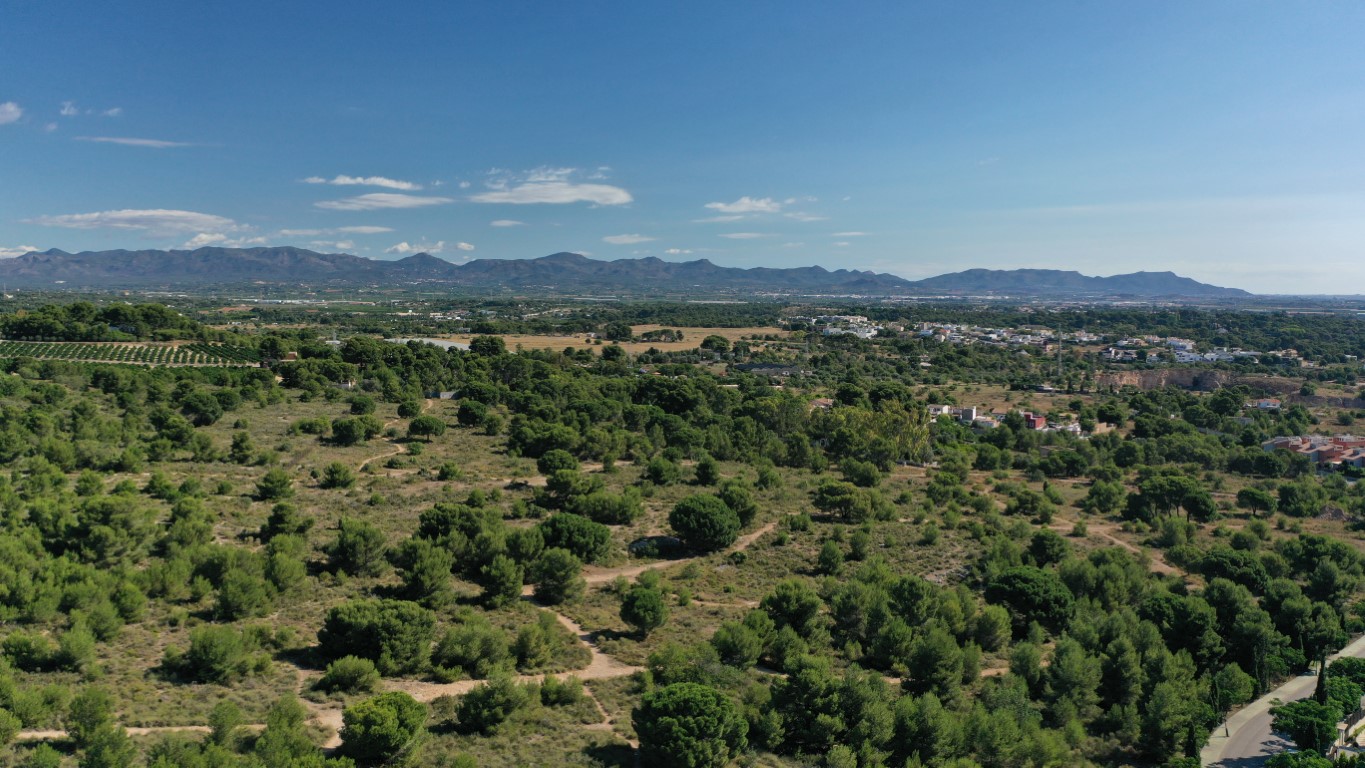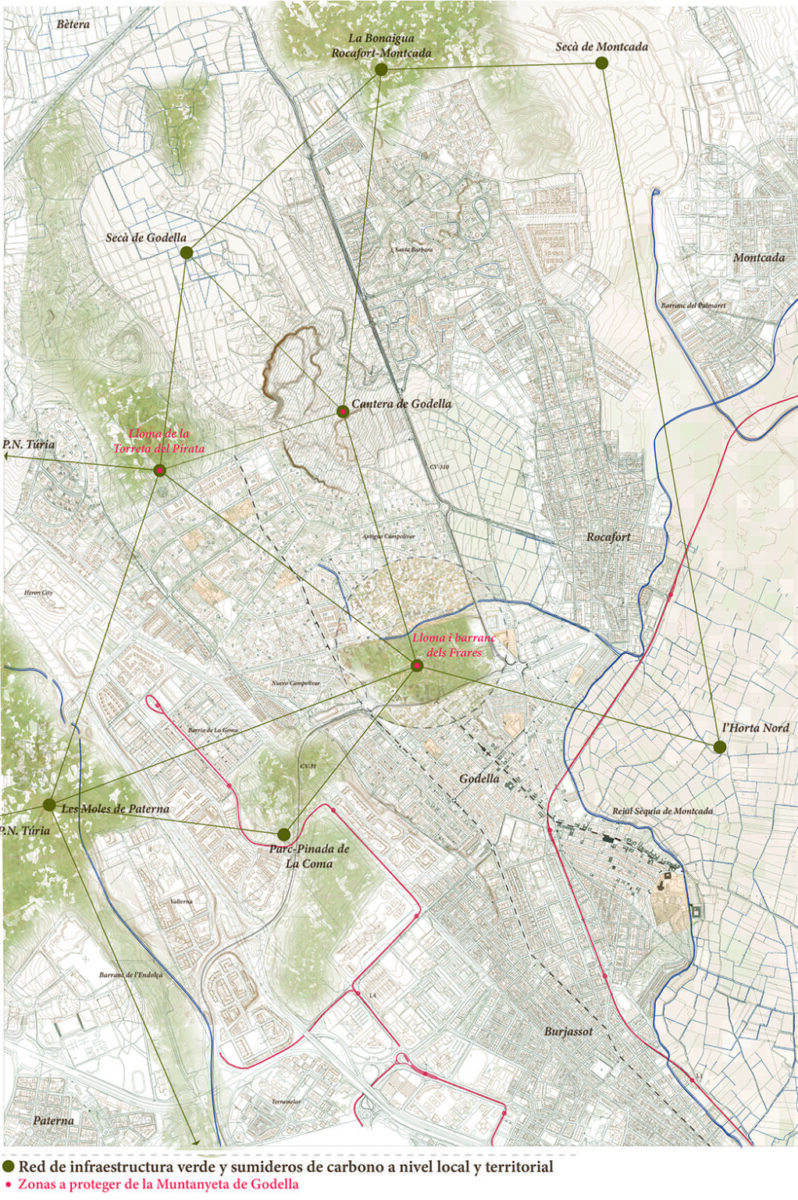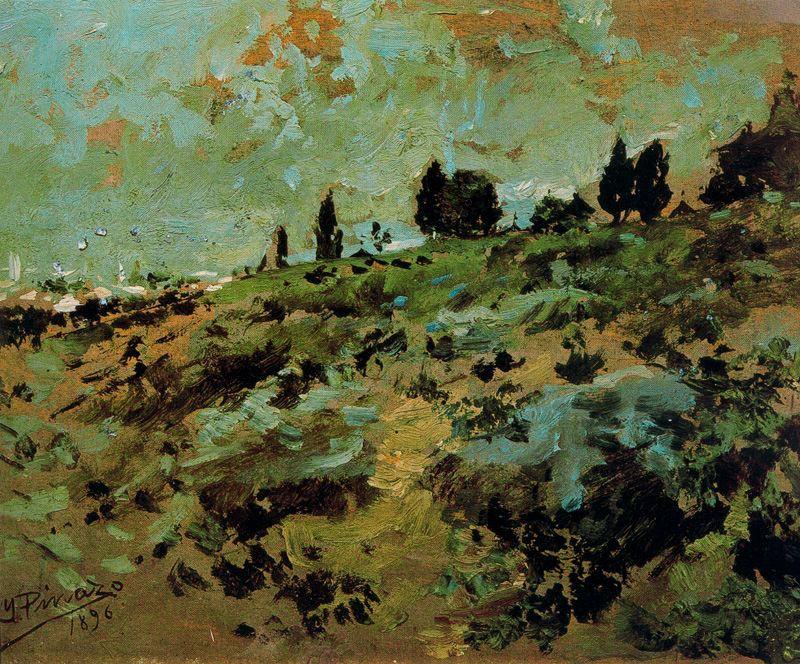An ecosystem approach to the Torre del Pirata

The Cañada de Trilles in Godella, popularly known as the Torre del Pirata, is a place of great environmental value for its characteristic Mediterranean landscape, its flora and fauna, and a regular place for the inhabitants of Godella to enjoy and connect with nature. It is another key element in the green belt surrounding the city of Valencia, which is now in the spotlight due to the possible urbanisation of the enclave, which has sparked numerous mobilisations and projects to enhance its ecological value.
According to Eugenio Graz, in his book ‘The Harvest of Water and Land’, sustainability means living within the regenerative capacity of the biosphere, i.e. finding a balance between human consumption of natural resources and recovery by nature. Humanity depends on the planet’s natural capital, which provides all the natural resources and ecological services necessary for life.

In Valencia, we are fortunate to have a unique natural environment, with its sea, its orchard, its mountains and Mediterranean forests, and now, more than ever, it is our responsibility to conserve and restore it in order to live in that balance so necessary for our survival. In this sense, the conservation of a green enclave close to the capital, the Torre del Pirata, has once again awakened the environmental conscience of local citizens, who are calling for the area to be declared a natural site.
Godella’s green heart
The Torre del Pirata area, officially Cañada de Trilles, is located in l’Horta Nord, in the municipality of Godella, and is a meeting place for many residents of the surrounding municipalities where they can still breathe fresh air, walk and enjoy the benefits of being in contact with nature. In this area of Mediterranean woodland there is an abundance of Aleppo pines, stone pines, carob trees and other cultivated species such as olive and almond trees, among numerous shrubs, aromatic plants and natural materials such as esparto grass, which takes you back to the essence and tradition of Valencia’s craftsmanship. It is also rich in renewable fuels that can be obtained from pine wood, almond shells or olive pits; and pharmacological or medicinal compounds with varied uses, as explained by Alfredo Marín, pharmacist and botanist, author of the book on the biodiversity of the Torre del Pirata, which was published in November 2021.
This mountain provides habitat for local wildlife, preserving the biodiversity of the environment and offering regulating services, as the tree mass acts as a carbon sink, regulating the climate and reducing air pollution. This is essential for the adaptation and resilience of the municipality and surrounding areas to an increasingly severe climate, with prolonged droughts and very heavy rainfall.
The surrounding area also has heritage elements, such as the Torre del Pirata. A watchtower that is now considered an Asset of Cultural Interest (ACI) or the houses in the Concheta neighbourhood, where you can still find Arab cisterns and constructions made by the same stonemasons who worked in the quarries, from where the stone was taken to build the fish market and other emblematic monuments of Valencia. A Godella that portrays the connection with its nature and traditions, thus preserving the historical memory of the landscape.
However, these natural and cultural benefits do not seem to be enough to protect and restore the mountains in the common interest and with the aim of guaranteeing the health of this and future generations. This and many other natural spaces in the area are green infrastructure, as they naturally include a network of stormwater management practices, such as green roofs, trees and permeable paving, which can capture and infiltrate rainfall where it falls, thereby reducing runoff, improving the health of waterways and regulating the water cycle. It is therefore an essential ally in preventing soil erosion and controlling flooding, but unfortunately the reality is that, despite the climatic emergency we are experiencing, our forests remain exposed and unprotected to predatory urban development, which in recent decades has already pushed us to the limit and has proved to be unsustainable, destroying thousands and thousands of hectares of coastline and Mediterranean forest in the Valencian Community in its wake.
Enhancing the value of natural heritage
In the case of Godella, the developers of this area, with the support of the town council, are going ahead with a 1990 urban development plan with the mission of destroying the 150,000 m2 of green zone in order to build 447 houses. This is why, faced with the possible irreversible loss of this Mediterranean forest, more than 20% of the municipality’s electorate has already expressed its rejection of this plan, as it has not been brought into line with current town planning legislation. The population demands the protection of the Torre del Pirata and the environment of the muntanyeta de Godella and the proposal to turn it into a periurban forest, a large green infrastructure for the city and, together with other similar sites in neighbouring municipalities, to form an agroforestry corridor between the Túria and the Carraixet as a green belt for the metropolitan area of Valencia.

This discontent has triggered a social mobilisation that has united eight associations in defence of the protection of the Torre del Pirata, strengthening links and building social cohesion. In addition, campaigns over the last year have collected the signatures of 88 artists from the town in a manifesto in defence of the protection and conservation of this environment, as Godella has been a source of inspiration for art for centuries.
As the architect Pepe Vicén Balaguer explains in his work Conectando sub-urbanidades, preservando la naturaleza, the paintings of Ignacio Pinazo Camarlench (Valencia 1849 – Godella 1916) are an example of this, as his affection for Godella, which was his village and where he established his family, is represented in the artist’s rapid urban and rural paintings with a fast and loose stroke. Pinazo portrays the customs and cultural landscape of Godella at the turn of the century.

He also refers in the work to the figure of Antonio Machado and other contemporary artists. The playwright, in particular, leaves as a witness the following poem that describes with affection the land where he lived during the year and a half before his exile, lyrically defining the territory and the ways of life that make up the villages of L’Horta Nord:
Ya va subiendo la luna sobre el naranjal. Luce Venus como una pajarita de cristal. Ambar y berilo, tras de la sierra lejana, y el cielo, de porcelana morada en el mar tranquilo. Ya es de noche en el jardín —¡el agua en sus atanores!— y sólo huele a jazmín, ruiseñor de los olores. ¡Cómo parece dormida la guerra, de mar a mar, mientras Valencia florida se bebe el Guadalaviar! Valencia de finas torres y suaves noches, Valencia, ¡estaré contigo, cuando mirarte no pueda, donde crece la arena del campo y se aleja la mar de violeta!
The natural heritage is part of Godella’s cultural heritage, from the Torre Pirata to Les Pedreres and the Lloma dels Frares, all of which are of great value in maintaining historically important landscapes or culturally significant species. Moreover, their conservation and sustainable use can affect the local economy and even create green jobs dedicated to the care and management of their biodiversity and boost eco-tourism.
Rather than an economic problem, preserving our forests presents an opportunity for local resilience, if a transformative plan is developed that benefits nature and people. A plan aligned with the National Strategy for Green Infrastructure and Ecological Connectivity and Restoration, which supports and promotes those transformative projects that carry out an adequate conservation and expansion of urban and peri-urban infrastructures, so as to optimise the ecological, cultural, economic and social services they provide to society, achieving an adequate balance between the enjoyment of citizens and the protection of the biodiversity they treasure.
This approach enables the adoption and implementation of integrated policies and plans to promote inclusiveness, resource efficiency, climate change mitigation and adaptation, and disaster resilience, in line with SDG 11 “Make cities and human settlements inclusive, safe, resilient and sustainable”. It is about valuing the natural and socio-economic values of urban ecosystems, so that the opportunities they provide are maximised in an environmentally sound manner. Now more than ever we need forests to improve our physical and mental health, and to reconnect with the natural environment of which we are a part. Now is the time to look to the future.
Towards environmental education and outreach
Various initiatives have emerged from the local population to promote the development of awareness campaigns on the importance of biodiversity conservation, and talks and workshops are being held on the conservation and promotion of biodiversity.

The Natura Godella initiative and exhibition project, endorsed by Valencia World Design Capital 2022, is a great example of this, as it was created as a museum model for raising awareness and education about Godella’s surroundings. The exhibition, which is open to the public until the end of April, provides audiovisual and illustrative material on the fauna, flora and fossils of the municipality through the eyes of several Valencian artists.
The commitment to carrying out activities that enable the conservation and enhancement of biodiversity is key, not only to promote respect for our environment but also to strengthen the social fabric and encourage citizen participation in the development of plans and projects that may affect the biodiversity of the municipality.

Bibliografia
Bibliography
VICEN BALAGUER, José. (2020) Conectando sub-urbanidades, preservando la naturaleza. TFM en la Universitat Politècnica de València





